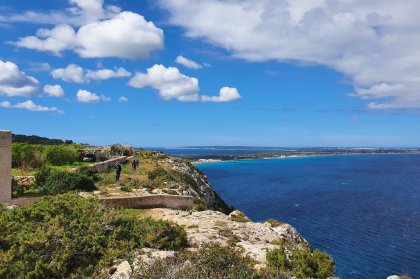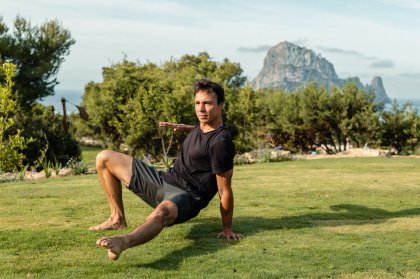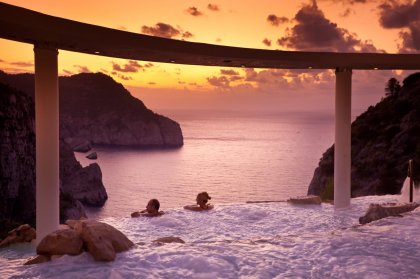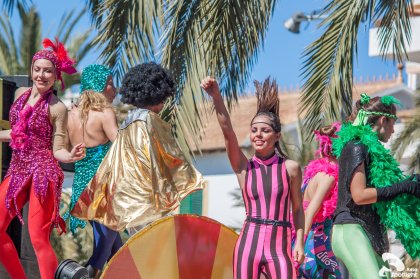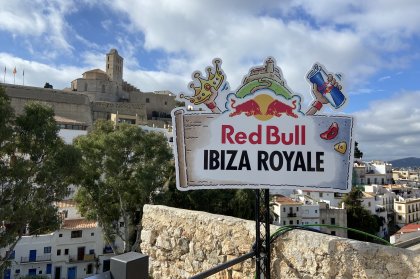For an island of its size - just 40km long – Ibiza packs in a lot of nature: red earth fields and mountains, pine covered hills, bright pink and red bougainvillea, wild rosemary and fennel and many indigenous plants and animals. You can hike across some of the most stunning natural worlds in the Mediterranean, take in the fresh air and feel the incredible spirit of the island bubbling up to the surface. Here are five of the best spots to immerse yourself in and discover Ibiza's original wild side.
Es Amunts Natural Park

The densely wooded mountainous area around covers 15.000 hectares of land, roughly a quarter of the island. The hills, small mounts and cliffs with spectacular sea views make it the ideal spot to commune with nature. There are many endangered plant species like grasses and herbs and animal species like toads, hawks and bats that call this place home. It's another kind of island wild side and you can discover it yourself or do a free guided tour in association with the Es Amunts Interpretation Centre in San Lorenzo, which you can also visit to understand the wild flora and fauna there before stepping out into the wilderness beyond.
Ses Feixes wetlands
In between Ibiza Town and Talamanca runs the crescent of wet lowlands called Ses Feixes, one of the few remaining wetlands in the Mediterranean and officially recognised by UNESCO. There's a huge amount of biodiversity in these fresh and salt water fed marshes and lots of migratory winter birds as well as reptiles and bats. Fortunately, though only for the moment, the wetlands have been saved from developers by the interest and pressure of environmental groups, so the time to go is now. You will also see the fascinating ancient (but once super high-tech) Moorish irrigation systems that have come to define the area.
Las Salinas Natural Park
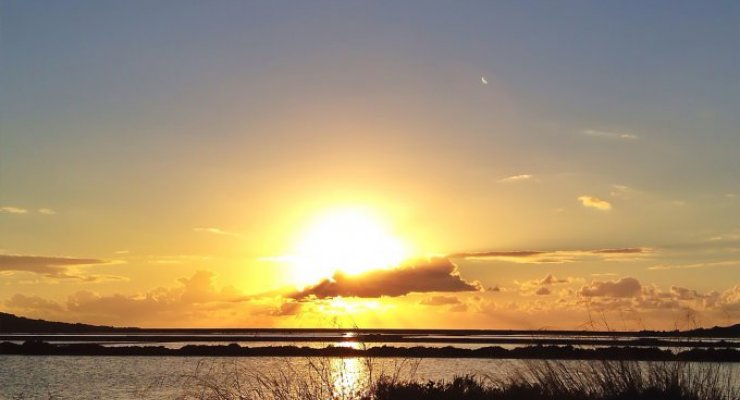
Most of those who drive through to the beach of the same name will have seen the salt flats of Las Salinas, without knowing this dreamy landscape's past. They made Ibiza Town one of the greatest of the ancient coastal ports of the Med, made rich by salt. 75% of the total area of the park is the sea with its densely populated Posidonia sea grass areas. The remaining land of dunes, forests, beaches and wetlands make for the most breathtaking walks taking in the sights of the gentle wildlife like flamingoes, plovers and rare local snail and beetle species.
Can Marçà caves, Puerto de San Miguel
These 100,000 year old caves are reached by an entrance that's only 10m above sea level, set in the visually stunning cliffs in Puerto de San Miguel. Formerly a hangout of smugglers and pirates, you'll see the frighteningly narrow ledges that were used to pull along contraband; the main event is the sight of the gnarled stalactites and stalagmites, the rock pools dyed with neon and the great artificial light show of the waterfall display. Outside, the views out to sea almost take you to an Ibiza in simpler times. End up on the beach down below and you have a capsule tour of natural beauty all in one spot.
Es Vedra

Es Vedra's looming presence has to be part of any choice picks. The islet rises majestically and dramatically from the sea and has come to be associated with mystery and as a place to make wishes. It is the home of the Sirens in the Homeric Epics, has been used for sacrifices and is said to be the tip of the sunken city of Atlantis. The best place to see it is from or above Cala d'Hort; with a little effort and to view it without hordes of tourists, walk from Cala Colodar to Cala Llentia where you will get some of the best views of the rock whilst basking in blissful tranquility.
One parting shot: when exploring Ibiza's nature, treat it with respect and make sure future visitors get to see it as it is today. With that in mind, let the wind call your name and step into the inimitable natural beauty of the island of Ibiza.
WORDS: Julian Heathcote
